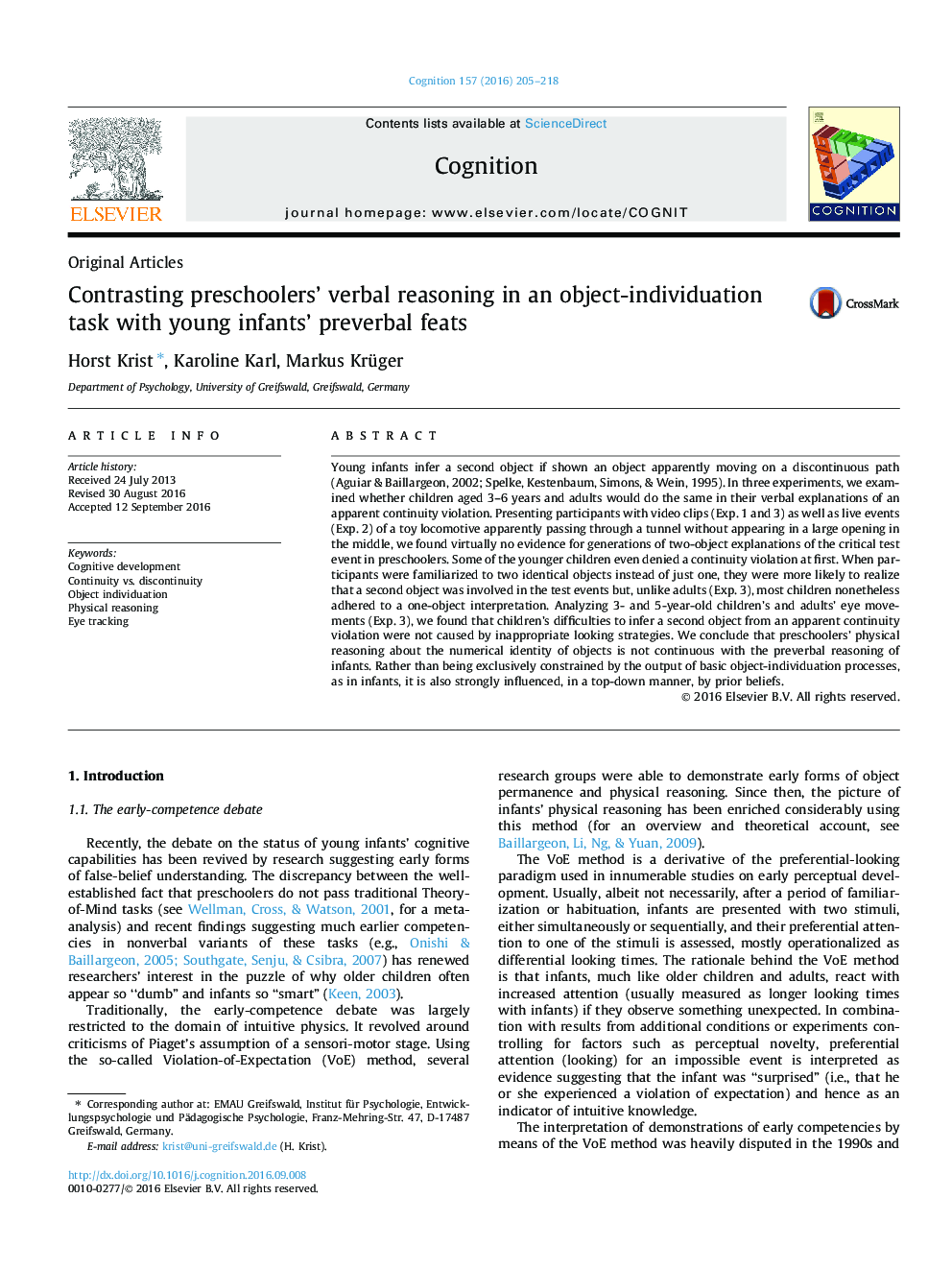| Article ID | Journal | Published Year | Pages | File Type |
|---|---|---|---|---|
| 7285759 | Cognition | 2016 | 14 Pages |
Abstract
Young infants infer a second object if shown an object apparently moving on a discontinuous path (Aguiar & Baillargeon, 2002; Spelke, Kestenbaum, Simons, & Wein, 1995). In three experiments, we examined whether children aged 3-6 years and adults would do the same in their verbal explanations of an apparent continuity violation. Presenting participants with video clips (Exp. 1 and 3) as well as live events (Exp. 2) of a toy locomotive apparently passing through a tunnel without appearing in a large opening in the middle, we found virtually no evidence for generations of two-object explanations of the critical test event in preschoolers. Some of the younger children even denied a continuity violation at first. When participants were familiarized to two identical objects instead of just one, they were more likely to realize that a second object was involved in the test events but, unlike adults (Exp. 3), most children nonetheless adhered to a one-object interpretation. Analyzing 3- and 5-year-old children's and adults' eye movements (Exp. 3), we found that children's difficulties to infer a second object from an apparent continuity violation were not caused by inappropriate looking strategies. We conclude that preschoolers' physical reasoning about the numerical identity of objects is not continuous with the preverbal reasoning of infants. Rather than being exclusively constrained by the output of basic object-individuation processes, as in infants, it is also strongly influenced, in a top-down manner, by prior beliefs.
Related Topics
Life Sciences
Neuroscience
Cognitive Neuroscience
Authors
Horst Krist, Karoline Karl, Markus Krüger,
